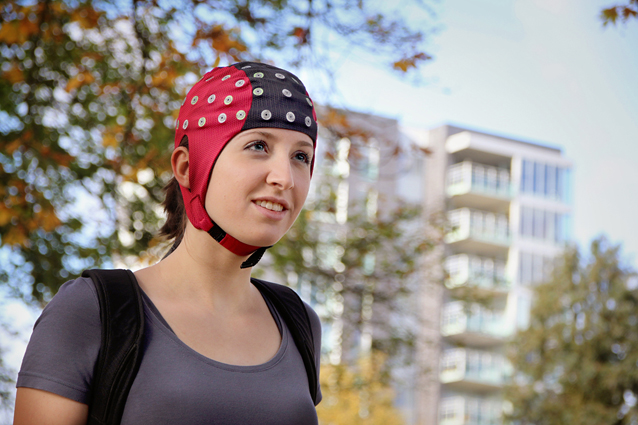Electroencephalography (EEG)

Electroencephalography (EEG) is a non-invasive neuroimaging technique that records electrical activity generated by neurons in the brain. By using electrodes placed on the scalp, EEG captures oscillatory patterns that provide a high temporal resolution, making it suitable for studying fast neural dynamics. The method is frequently used to investigate various processes, including attention, memory, and perception. In addition to investigating brain states such as flow and alertness. While EEG is advantageous for its high temporal precision, it has limitations in spatial resolution and the inability to capture activity from deep brain structures.
Our system
- EEGO sports system by ANT Neuro.

Useful links
- User manual →
- ANT Neuro webinars →
- Analyzing EEG data using EEGLAB →
- Find the risk assessment for all our equipment by clicking ‘here →‘.
Further Reading
- Keil, A., Debener, S., Gratton, G., Junghöfer, M., Kappenman, E. S., Luck, S. J., … & Yee, C. M. (2014). Committee report: Publication guidelines and recommendations for studies using electroencephalography and magnetoencephalography. Psychophysiology, 51(1), 1-21.
- Luck, S. J. (2014). An Introduction to the Event-Related Potential Technique (2nd ed.). MIT Press.
- Cohen, M. X. (2017). Where Does EEG Come From and What Does It Mean? Trends in Neurosciences, 40(4), 208-218.
- Makeig, S., Debener, S., Onton, J., & Delorme, A. (2004). Mining Event-related Brain Dynamics. Trends in Cognitive Sciences, 8(5), 204-210.
- Nunez, P. L., & Srinivasan, R. (2021). A theoretical basis for standing and traveling brain waves measured with human EEG with implications for an integrated consciousness. Clinical Neurophysiology, 132(1), 269-296.